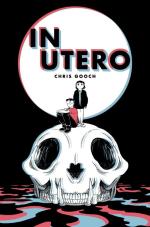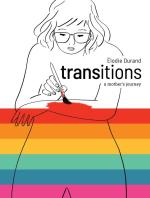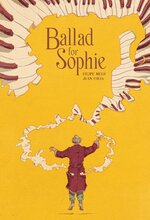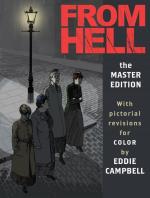(no title)
January 24, 2007
First, a sneak peak at the early stages of our forthcoming sampler book, with a spiffy by Jeffrey Brown. Super cool stuff.
*******
Here's a great review of Renee French's The Ticking. It will run in German, in the superb Swiss anthology magazine, Strapazin, and as far as i know this is the only review in English.
Beautiful on the Inside: Renée French’s The Ticking
Review by Mark David Nevins, January 2007
It is likely that the average person in this day and age does not often employ the word “ticking.” Unless in reference to a clock, and even then probably not that often, because how many clocks tick anymore in our digital age? Ticking is, of course, the heavy and coarse cotton fabric used in manufacturing the covers of mattresses, and if there’s any ambiguity in the word’s meaning as the title of Renée French’s latest work, then the first few pages of the book clears it up right away: there’s no title page to be found, but rather a series of five drawings of swatches of that tough striped canvas you see every time you change your sheets.
Renée French is a gifted artist who sometimes creates what could best be described as children’s books which should under no circumstances be given to children and which tend to make adults feel rather uncomfortable. The Ticking is a picture story full of mysteries, not the least puzzling of which is the significance of its title. Other than the first and last pages of the book…extended end-papers of a sort…mattress fabrics do not seem to appear anywhere. However, to be fair, beds do play an important if not prominent role in the story. Poor monstrous little Edison Steelhead doesn’t have the luxury of coming into this world in a bed: his mother dies in childbirth on the kitchen floor. But some of his happiest moments are spent (alone) in bed: drawing, reading, talking to his various puppets and imaginary friends. And his story (at least this chapter of it) ends with a horrible discovery, when he’s interrupted in bed during a moment of reverie in the hotel room he comes to call home. Like some of French’s other creations, Edison is bizarrely disfigured on the outside but intelligent and gentle on the inside. Over the course of this tale he eventually finds peace with himself, but he does so by and large without anyone else’s help, unless you count his little sister, a chimpanzee who sleeps comfortably tucked into a proper human bed, blankets and all.
Just like the stories she tells, the work of Renée French is rather difficult to describe satisfactorily. The description “dreamlike” is often used, but The Ticking is at once more strange and less nonsensical than most dreams tend to be. It reads as a nightmare experienced with great tranquility and in slow motion. The films of David Lynch offer a good counterpoint to her work…and Edison even resembles the creature in Eraserhead a bit. Like Lynch, French is interested in exploring the unsettling and mysterious things that lie just below the surface of the normal and mundane, the way the ticking of a bed lies under the layers of linen. In 1919, Sigmund Freud made a rare foray into literary criticism with his monograph Das Unheimliche, and it might be said that French has devoted her work in the comics form to an exploration of Freud’s concepts of foreignness and the uncanny. That essay by Freud makes great reading alongside French’s oeuvre, by the way.
French’s work is both shocking and poetic, and with every book her stories seem to become simpler but also deeper and more moving. Books by Renée French come along far too infrequently, and she clearly grows and evolves as an artist from book to book: here she employs pencil drawings as deft as she has ever executed, which are punctuated by what appear to be dry-point etchings that offer a surprising additional perspective on the tale’s elusive themes. The Ticking leaves the reader with a feeling of mellow introspection…a peacefulness in spite of the weird and sad events that plague poor Edison. As French matures as an artist, and as we mature with her, perhaps we are becoming less repelled by her monsters and her fascination with physical violence and bodily functions because we recognize that the things she is trying to show us are in fact metaphors for our own lives…although not necessarily those aspects of our lives that we are most comfortable thinking about or tend to disclose or talk about much.
After several readings of The Ticking, I’ve come up with my own personal meaning for the book’s title. When I was very young (and French has now caused me to reflect on my childhood while thinking about her book), I could spend hours on my bed, losing myself in the patterns in my bedspread or in the texture of the pillow’s fabric (or, indeed, in the ticking if I pulled up the corner of the sheets). I would discover universes in the dust-motes swirling in a ray of light coming through the window, or in the swimming after-images I could create by squeezing my eyes tightly shut. Time stopped in these moments, and for the first instances in my young life I found myself asking questions such as “Who am I?” and “Why am I here?” and “Am I really loved?” and “What will happen when I die?” In the rush of adult life it’s far too easy to forget the perceptions and insights we were able tap into when we were children…the wonder and fear brought about by our bodies and our emerging consciousness…and I am grateful to Renée French for giving us the occasional opportunity to see again, new, through her eyes.














